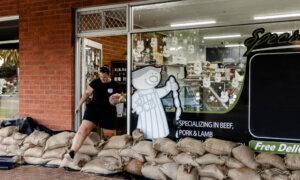Supermarkets remain silent on Tim Tam price difference
Coles and Woolworths executives have passed a sticky question about the price difference of Tim Tams in London and Australia to biscuit maker Arnott’s.
A Senate committee is currently looking into cost-of-living issues and potential actions the federal government can take to alleviate household pressure.
Both Woolworths chief commercial officer Paul Harker and Coles head of public affairs Adam Fitzgibbons noted that their suppliers are facing increasing inflationary pressures.
Senator Jane Hume raised the issue of why packets of Tim Tam chocolate biscuits, made by Australian-based Arnott’s, are pricier in Coles and Woolworths compared to UK supermarket Tesco in London.
Harker mentioned that this question should be directed to Arnott’s, as Woolworths does not have insight into the commercial agreements of Arnott’s in different markets.
“I am unaware of the arrangements they have in the UK market and the margins they aim for,” he stated.
“We have negotiated the best standard cost that we can … and we put all our efforts into negotiating promotions.”
An Arnott’s spokesperson mentioned that the company invests in promotional programs to ensure that customers can purchase the biscuit at a great value throughout the year.
According to Arnott’s, the average price of original Tim Tams nationwide over the past 12 months was $3.15 (US$2.12), while UK customers paid $4.50 (US$3.02).
As of October 6, Woolworths listed a 200-gram packet online for $6 (US$4.04), while Coles reduced their usual $6 price to $4.50.
Both supermarkets are facing increased scrutiny, with the national consumer watchdog accusing them of raising prices before offering discounts.
These allegations concern 266 products at Woolworths over 20 months and 245 products at Coles over 15 months.
An interim report from the watchdog in September indicated that the major supermarkets operated as an “oligopoly” with limited motivation to compete on prices.
“While there are a limited number of supermarket chains in Australia, it does not automatically mean there is low competition,” Fitzgibbons explained. They plan to submit a report in response.
Harker highlighted that 13 consecutive interest rate increases, rising energy and fuel costs, and challenges in overseas shipping have affected suppliers.
From the 2022/23 period, the number of packaged goods suppliers requesting cost increases from Coles has more than doubled, according to Fitzgibbons.
“This is having a direct impact across the store,” he added.
Fitzgibbons also noted that Coles is experiencing ongoing inflation, especially concerning shipping expenses.
“Inflation poses a challenge in maintaining low prices,” he mentioned. “These inflationary pressures not only affect Coles but the entire supply chain, making it more costly for us to purchase and sell goods.”
Woolworths, which made $108 million (US$72.74 million) in 2023/24, stated that they generated “reasonable” profits and paid $1.35 billion (US$0.91 billion) in taxes last year—the same amount distributed to shareholders as dividends, according to Harker.
Fitzgibbons added that for every $100 (US$67.35) spent at Coles, the company makes a profit of $2.60 (US$1.75), a figure consistent with international supermarkets.
Both Coles and Woolworths reiterated their commitment to maintaining prices as low as possible.





